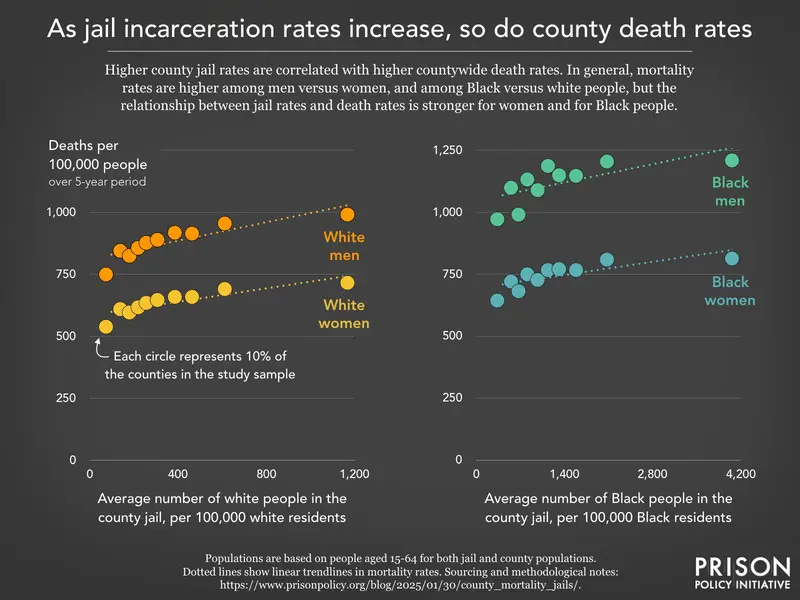Top reads: A former Georgia prosecutor dying of cancer is spending his last years trying to reduce a harsh life sentence he demanded decades ago, but the obstacles are severe; the Fund for Guaranteed Income compiled data on hundreds of incarcerated California firefighters and found their prison commissary contribution details so you can send the money directly here; the Appalachian Rekindling Project bought land in the middle of a prison site to show a better way (and stall construction).
Media
Read Variety magazine’s glowing review of The Alabama Solution, a striking new documentary about abuse in Alabama prisons, featuring a lot of footage taken by prisoners themselves.
Paint Me a Road Out of Here follows the 50-year journey of a painting made for women incarcerated on Rikers. Created to inspire, removed and painted over, forgotten, rediscovered and liberated, the painting’s story teaches us something about freedom. Trailer here.
Royal Ramey, the ED of the Forestry and Fire Recruitment Program, appeared on Jon Stewart to talk about their work to train formerly incarcerated people as firefighters. He spoke about his time as a firefighter in prison in California. There are many hundreds of men in prison in California who work extremely long hours for low pay to fight fires in the state. They receive wide attention and praise when there’s a large fire happening, but afterwards, the attention fades quickly. I hope that this time will be different.
Solutions and Wins
A Pennsylvania county just forgave over $65 million in “pay to stay” jail debt, after years of charging people for nights spent in jail. This change was championed by Justin Douglas, the Dauphin County (Pittsburgh area) commissioner who won a surprise victory in 2023 after campaigning on criminal justice reform.
Congestion pricing may be having an unexpected positive impact in reducing crime on the subway, by driving more people to ride public transit. There is a broader lesson here about the solutions to crime in so many cases exist outside of the criminal justice system itself.
New Orleans was able to cut homicides by 50% in two years while the number of police officers remains historically low. This took place during progressive DA Jason Williams’ tenure.
The fight against an unnecessary and extremely expensive federal prison construction project in eastern Kentucky continues. The latest move was by an indigenous-led group that bought land in the middle of the (enormous) proposed site, giving them standing to legally challenge the project. They plan to reintroduce native species and restore the land.
The Prison Policy Initiative outlined winnable policies for criminal justice reform in 2025.
Scott Minton, who served 30 years in prison for aggravated rape and robbery in Tennessee, was just exonerated and released. 18 witnesses corroborated his alibi at the time of the crime but he was still convicted.
Reports and Research
Here’s a somewhat technical rundown in Split Ticket on who is voting for reform prosecutors.
The Chicago Future Fund, established by Equity and Transformation, has a report on the impact of guaranteed income on the lives and successful reentry of formerly incarcerated people. They gave $500 a month for a year to 100 people, which resulted in bills paid on time, reduced homelessness, reduced stress, and continuation of a high motivation to seek work. Here is a short video (1.5 mins) about one of their participants.
The Prison Policy Initiative continues its prolific and helpful reporting by sharing analysis on how increased incarceration leads to higher death rates in surrounding communities. I was most struck by this finding: “The study finds that both Black and white women’s death rates in almost every age group increase more dramatically with higher jail rates than men’s do…. Because men are incarcerated at rates far higher than women, the impact of the carceral system on women’s lives is often overlooked, but this research underscores the need to study how mass incarceration endangers women’s lives inside and outside of jails and prisons, too.”
PPI also has this excellent and useful report on prison discipline, finding that disciplinary writeups are often for ‘minor’ infractions, but lead to quite harsh discipline. They include a number of recommendations for change.
I was really interested to read Radley Balko’s post lamenting the overturning of an Illinois case where the judge found that ballistics expertise — matching a bullet to a particular gun — is junk science. Here’s his description of what’s wrong:
The first problem is that there’s just no scientific evidence to support the premise upon which the entire field rests — that every gun leaves unique marks on the bullets and shell casings it fires.… We do not know how many guns are capable of leaving a particular mark on a bullet or shell casing. Moreover, deciding whether a series of marks constitutes a “match” to a specific gun is an entirely subjective process based on the judgment and “experience and expertise” of the analyst. We can’t even say that a single gun leaves the same unique marks over time. The marks likely change over time as the grooves in gun barrels wear down.
This brings us to the second problem with this field: Even if the claim that every gun leaves signature marks could be proven, there’s no evidence that these analysts are good at matching those marks to the gun that left them. There’s even less evidence that they’re good enough at it for their testimony to be the reason someone goes to prison.
Commentary and Analysis
Mariame Kaba offers a short history on prison visitation in her latest newsletter.
Judd Legum digs into industry data on shoplifting, finding that the levels have stayed fairly consistent over time, but retailers have now stopped reporting data and instead put forward anecdotal impressions about increasing shoplifting. Something is fishy!
Justine Oldermann tackles the question of pretrial punishment, arguing that holding people in jail before they’ve been convicted of any crime is deeply wrong.
Journalist Keri Blakinger has an interesting and informative thread on the history of incarceration in Los Angeles, including the age-old questions around jail conditions.
Paul and Mark Engler write that social movement ecology can help groups with different organizing traditions work together to win change in a time of hostile government.
U.S. Catholic urges its readers to tackle mass incarceration as a matter of their commitment to the faith in this jubilee year.
The UK prison population is approaching 100,000 prisoners, more than any US state other than Texas (though UK has twice the population, so their rate is still much lower), and their numbers are going up. Four incarcerated activists recently wrote to the minister in charge of the prison system, urging her to reconsider this path. When doing some reading to put this in context, I was interested to note that the UK’s prison population has more than rebounded since COVID, whereas in the US our numbers have remained 11% lower than the pre-COVID peak, while the country’s population has grown 3.6%. I’d like to attribute this to a robust advocacy field that has worked very hard to make it that way. If the UK’s field is thin and underdeveloped, could that explain the difference?
Wall of Shame
The president of El Salvador offered to receive and incarcerate people deported from the U.S. for not having papers and people convicted of violent crimes. His mega jail can reportedly hold 40,000 prisoners, and houses people 70 to a room. There is no education, no outside time, one meal a day, and we imagine a ton of violence. This is a sinister direction that I think we should take seriously, rather than dismissing it as bluster or kissing up to Trump.
Architecture firms around the country have been working behind the scenes to make the case for bigger jails, so that they then can be hired to design them, the Intercept reports. If you want to support an organization that stands directly opposed to this, check out Designing Justice + Designing Spaces, an architecture firm dedicated to building spaces that move us away from prisons.






